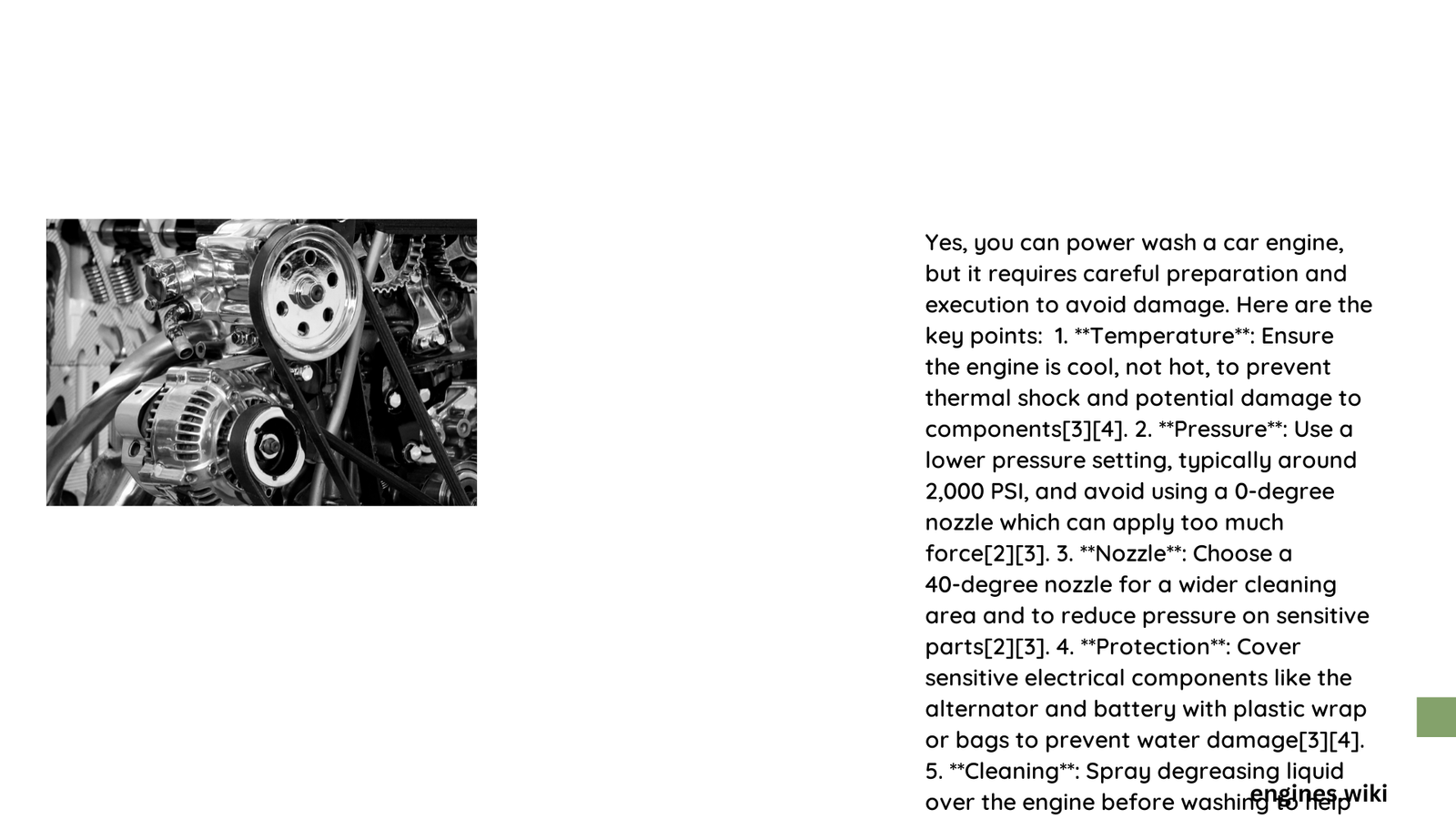Power washing a car engine is a delicate process that requires careful preparation and execution. While it’s possible to clean your engine using a pressure washer, numerous risks exist that can potentially damage sensitive electrical components, compromise engine performance, and void vehicle warranties. This comprehensive guide will explore the nuanced approach to safely cleaning your car’s engine, providing expert insights into when power washing is appropriate and when alternative methods are recommended.
What Are the Risks of Power Washing a Car Engine?
Potential Electrical Damage
Power washing can cause significant risks to your vehicle’s electrical system:
| Component | Risk Level | Potential Damage |
|---|---|---|
| Battery | High | Short circuits, corrosion |
| Alternator | Medium-High | Moisture intrusion, electrical failure |
| Fuse Box | High | Complete electrical system compromise |
Why Protect Electrical Components?
Water intrusion into electrical systems can lead to:
– Unexpected short circuits
– Corrosion of electrical connections
– Potential complete system failure
– Expensive repair costs
How to Safely Prepare for Engine Cleaning?

Essential Preparation Steps
- Cool Down the Engine
- Ensure the engine is completely cool before starting
- Avoid washing immediately after driving
-
Wait at least 30 minutes after stopping the vehicle
-
Protective Measures
- Cover sensitive electrical components
- Use waterproof tape or plastic wrap
- Seal air intakes and exposed electrical areas
Recommended Cleaning Techniques
Low-Pressure Approach
- Use pressure washer below 1000 PSI
- Select wide fan tip nozzle
- Maintain distance of 12-18 inches from components
- Use gentle, sweeping motions
What Are Alternative Cleaning Methods?
Safer Cleaning Techniques
- Degreasing Agents
- Use water-based degreasers
- Apply with spray bottle
- Allow 5-10 minutes of sitting time
-
Wipe with microfiber cloth
-
Manual Cleaning
- Use soft brushes
- Apply specialized automotive cleaners
- Wipe with damp microfiber towels
What to Do After Cleaning?
Post-Cleaning Maintenance
- Thoroughly dry all components
- Inspect electrical connections
- Apply protective sprays
- Vinyl and rubber protectant
- Anti-corrosion spray for metal parts
Professional Recommendations
Expert Tips
- Always consult vehicle manufacturer guidelines
- Consider professional detailing for complex engines
- Avoid frequent high-pressure cleaning
- Perform gentle maintenance regularly
Warning Signs
❌ Do not power wash if:
– Engine has visible electrical damage
– Components show signs of wear
– Warranty might be compromised
Final Thoughts on Power Washing
While power washing a car engine is possible, it requires meticulous preparation and careful execution. The risks often outweigh the benefits, making alternative cleaning methods more recommended for most vehicle owners.
Pro Tip: When in doubt, consult a professional automotive technician who can provide personalized advice for your specific vehicle model.
Recommended Tools
- Low-pressure washer
- Waterproof tape
- Degreasing solution
- Microfiber towels
- Soft-bristled brushes
Reference:
– Pistonheads Discussion
– Autoglym Engine Cleaning Guide
– Pressure Washers Direct Tips
